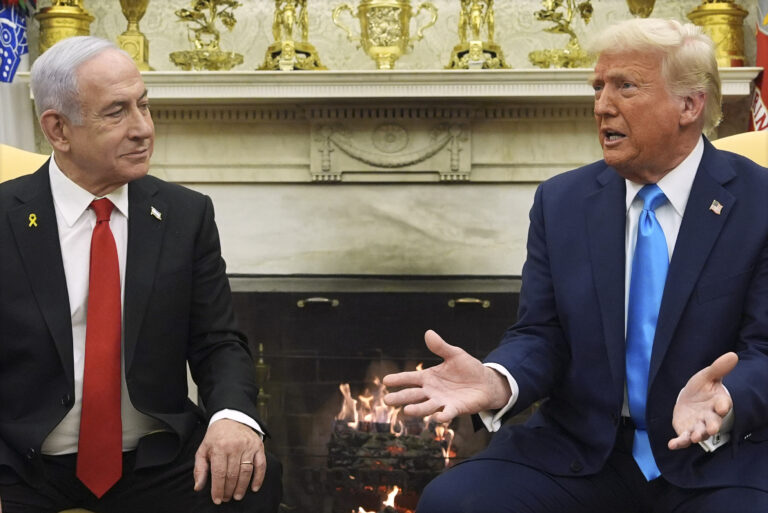House Republican allies of President Donald Trump are intent on giving him a long-sought victory in Congress by finally making a down payment on his long-promised wall along the U.S. border with Mexico.
They just don’t want to risk an up-or-down vote on the idea that might risk an embarrassing loss on the House floor. The $1.6 billion cost will be covered by taxpayers, not Mexico, as Trump promised over and over during the campaign. Action this week comes about three months after Democrats blocked an earlier attempt to deliver a down payment on Trump’s project.
But the August congressional recess is looming, and GOP leaders are making a House win on the border wall a top priority.
“This week, we’re going to take action on key elements of the president’s strategy to secure our borders, including the resources for a physical barrier,” House Speaker Paul Ryan, R-Wis., said on Tuesday. “You see the fact that the cartels are staging just over the river, there is a need for a physical barrier in many parts of this border.”
Many Republicans from border states, swing-district lawmakers, and Republicans representing sizable Hispanic populations oppose the wall. The issue polls poorly with the public.
“I’m not a huge proponent of the wall,” said Rep. Ileana Ros-Lehtinen, R-Fla. “I remember, ‘Mexico’s going to pay for this wall.’ And now taxpayers are paying for it. What happened to that promise, along with many others?”
GOP leaders have sprung a plan to lump the wall funding in with a massive $788 billion spending bill that includes money for the military and the Department of Veterans Affairs, which provides political cover for any Republicans that might have qualms. The measure, expected to pass on Friday, combines four appropriations bills into one. The wall money would be added in a procedural vote on Thursday.
The Senate has yet to act on any of the 12 annual spending bills and a major battle over the U.S.-Mexico wall looms in that chamber.
In his May budget, Trump requested $1.6 billion to construct three segments of wall totaling 74 miles, including 14 miles of secondary fencing in San Diego and 60 miles of fencing and levee wall in Texas’ Rio Grande Valley. That averages $21 million per mile.
Lawmakers rejected a similar request earlier this year as the GOP-controlled Congress wrapped up a catchall spending bill for the 2017 budget year that Trump inherited. GOP leaders did not want to force a showdown with Democrats over the wall and Trump reluctantly agreed. But he vows to obtain the money in the current round of spending bills, for the fiscal year beginning in October, and the impasse could lead to a government shutdown later this year.
The Trump administration is still trying to figure out design issues and where to construct the wall, since it’s impractical to build everywhere along the almost 2,000-mile border. And despite the political appeal of the fence for Trump partisans, opponents say a wall interferes with property rights of landowners along the border, is too expensive, and damages the environment.
There’s already about 650 miles of fencing and other barricades — roughly 350 miles to block pedestrians and 300 miles to block vehicles — that’s been built along the southern border. That fencing was built in the areas that are most vulnerable to illegal crossings.
Trump’s pending and partial request doesn’t excite the most determined supporters of the wall.
“It’s not all funding for the wall but it’s a start,” said Rep. Louis Gohmert, R-Texas.
Some GOP backers of the wall worry that the administration is listening to critics who say it’s impractical or too expensive. Much of the remaining 1,300 miles is very rough terrain, with steep construction costs and a limited return for the dollar.
“The people in our administration, the president excluded, are looking at a diminished, not very aggressive approach to the wall,” said Rep. Steve King, R-Iowa. “If we’re going to have a 2,000-barrier, put that plan together …. If you start with a piecemeal approach it’s awfully hard to get to the full picture.”
Democrats are strongly opposed to the wall and are furious that the money is set to advance without a full debate or up-or-down vote.
“The wall will not work and we will not be able to debate that fully,” said No. 2 House Democrat Steny Hoyer of Maryland. “That is ducking the issue.”
An Associated Press-NORC Center for Public Affairs Research poll this spring found 58 percent of respondents were opposed to funding the wall with just 28 percent in favor.
(AP)











